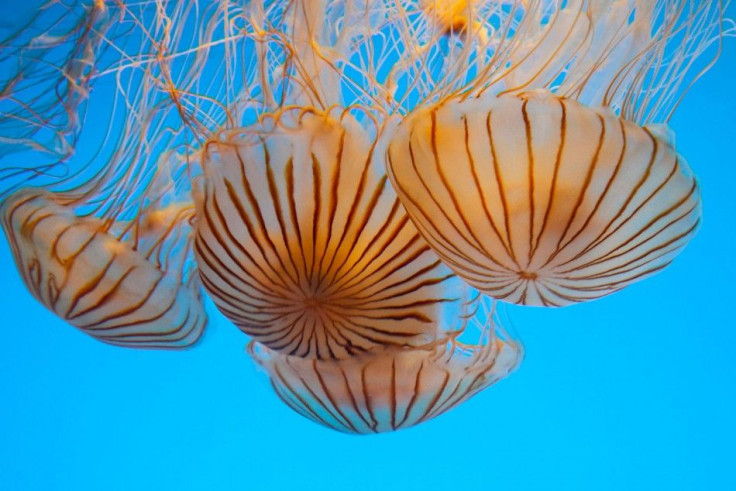Jellyfish Blooming In Seas Around The World: Human Activities & Global Warming To Blame

Jellyfish populations are on the rise in marine ecosystem worldwide and may interfere directly with human activities, new research concludes.
Researchers at University of British Columbia found that overfishing and global warming contributed to jellyfish invasions and signaled larger problems with marine ecosystems.
Scientists tallied jellyfish abundance annually after 1950 across 45 marine ecosystems including coastal waters and seas. About 62 per cent (28) of the surveyed large marine ecosystems showed increased jellyfish populations, the report authors noted.
Thriving populations of invasive jellyfish in systems like the Mediterranean and Black Seas should serve as warnings for other ecosystems around the globe, and it is likely that far more invasions have occurred than are reported, the study authors warned.
The international journal of aquatic sciences, Hydrobiologia published the study April 3 online.
The study showed that non-indigenous jellyfish invasions across four marine ecosystems -- the Gulf of Mexico, Southeast U.S. Continental Shelf, Caribbean Sea, and Baltic Sea -- contributed to slight population increases.
Researchers were not able to pinpoint a single cause of jellyfish blooms. The researchers hypothesized that mining and military operations may interfere with fishing and spoils catch by clogging and splitting split nets.
Because jellyfish populations can have important impacts on human activities and marine ecosystems, it is of paramount importance that we rapidly increase our understanding of these creatures, the researchers concluded.
© Copyright IBTimes 2024. All rights reserved.











